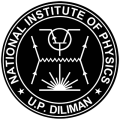In a simple Opening Program, the Institute (NIP) in cooperation with the Philippines Science High School System (PHSH) undergoes internship program this year during the Midyear Term 2015 last 17 June.
UPD (17 June 2015) / NIP and PHSH officials with the high school students from different PHSH System campuses gathered together to mark the start of their internship program this year. It is a continuation of the program since last year when it was still called SSIP (Summer Science Internship Program). It is now shortened to Science Internship Program (SIP).
In SIP, select students will get to experience real-world workings of a scientific tradition found only in the Institute. They will have the chance to work with the leading physics experts in the respective fields of research. They are expected to gain skills and knowledge and impart the learned scientific culture and attitude in their further studies and training in life.
Leading Physicists, Dr. Rosendo Daza (PhD in Physics) an alumni from the Institute (since his undergraduate) lead the talk on the opportunities in the Industry as he talked about the SunPower corporation that leads in producing highly efficient solar panels. These panels are important in gathering the energy from the Sun and give us ability to store them for later use. Another leading scientist in Physics gave a talk on the possible work in the academe, Dr. Giovanni Tapang (PhD in Physics) also a professor of Physics in the Institute who is at the helm of VISSER (Versatile Instrument System for Science Education and Research), a project that aims to provide a system that is centered around a handled microcontroller-based universal platform for laboratories both in the public (both instructional and research). Both speakers underscored the importance of skill building in Physics career.
[PICTURE] (NIP / 17 June 2015) Participants in the Science Internship Program (SIP) of the National Institute of Physics and the Philippine Science High School System posing right after the Opening Program held at the iCSI-1 .
